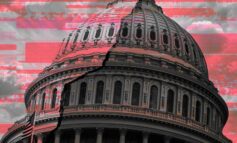In the history of the United States, four presidential candidates who came in second in the popular vote were “elected” president (John Quincy Adams in 1824, Rutherford B. Hayes in 1876, Benjamin Harrison in 1888, and George W. Bush in 2000).
This inversion of democratic elections was due to the fifty states’ winner-take-all laws and the absurdity of the Electoral College. To political observers in other democratic countries, the U.S. is the laughing stock for its failure to change this system that rejects the popular will.
Change is in the wind. A remarkable civic movement is taking on this overlooked issue. The “National Popular Vote” is successfully pressing for an interstate compact, whereby states pass laws declaring that they will give all their electoral votes to the winner of that national popular vote for president.
Presto! Therefore, there is no need for a Constitutional amendment to repeal the Electoral College. What the compact does is align the electoral vote with the popular vote since the Constitution exclusively accords the states the authority to select the manner of choosing its presidential electors.
Remember from your history book, voters do not vote for presidential candidates directly; they vote for a slate of presidential electors who then vote for the real candidates.
So far, led by philanthropist Steve Silberstein and his colleagues, 10 states (and the District of Columbia) possessing 165 electoral votes together – or 61 percent of the 270 electoral votes necessary to prevail – have enacted laws for this interstate compact. They are Rhode Island, Vermont, Hawaii, Maryland (the first to do so), Massachusetts, Washington, New Jersey, Illinois, New York and California. (Visit nationalpopularvote.com for state-by-state details and the list of their bi-partisan advisory board with both retired Republican and Democratic members of Congress.)
There are numerous other benefits of this long-overdue reform that one backed by public opinion polls in the past few decades. With such a reform, presidential candidates will become more likely to campaign in more states, regardless of whether they are “blue” states, “red” states or closely divided states. Presidential elections will no longer be focused in a tiny number of “battleground states” such as Florida, Ohio, Virginia, and Iowa.
In 2012, a majority of the general election presidential campaign events were just in those four states. That means most Americans never see these candidates in their states to meet, question, support, or oppose them. Mitt Romney did not campaign in California or New York; while Barack Obama did not campaign in South Dakota or Texas.
As a presidential candidate, I always thought ignoring states, by so pragmatically reflecting the winner-take-all Electoral College, was disrespectful to the American people of the states who were visited less frequently or not at all.
Each time I ran for president, I campaigned in all 50 states, though there was no need for me to be concerned about the winner-take-all rule.
This interstate compact, once it reflects a majority of the electoral votes – enough to elect a president (270 of 538) – assures that, in Silberstein’s words, “every vote, in every state, will matter in every presidential election.” When people know that their vote matters, they are going to be more motivated to turn out to vote.
Beyond the aforementioned four instances in which the second place candidate in the popular vote became president, there were more close calls. Silberstein explained that “a shift of 59,393 votes in Ohio in 2004 would have elected John Kerry despite President Bush’s nationwide lead of over 3,000,000 votes. A shift of 214,393 votes in 2012 would have elected Mitt Romney despite President Obama’s nationwide lead of almost 5,000,000 votes.”
With importance placed on the popular vote over the electoral vote, voter suppression or messing with the counting of the votes in specific swing states (i.e.: Florida in 2000 and Ohio in 2004) will not be as likely.
The present skewed system gives more importance to a tiny number of “battleground” states, which tip the election. Politicians favor these states with more visits and more tangible benefits once the candidate is in office.
Perhaps it is a coincidence, but, as pointed out by National Popular Vote, “battleground” states receive 7 percent more federal grants than “spectator” states, twice as many presidential disaster declarations, more Superfund enforcement exemptions and No Child Left Behind exemptions.
Applying my theory that it takes 1 percent or less of the citizenry to make major changes in American government (so long as they reflect majoritarian opinion), this tiny group, the National Popular Vote, could be nearing a historic triumph with its educational and advocacy efforts at the state legislative level.
There is a lot of talk these days about growing inequality in the country. That inequality is exacerbated by the lack of direct influence in elections that a popular vote would give those currently underrepresented groups. This nationwide citizen drive working to reduce inequality among voters could be an important step toward closing the inequality gap.
To join the effort for the national popular election of the president, go to nationalpopularvote.com for clear and crisp guides toward becoming a participant in your state.
-Ralph Nader is an activist, author and consumer advocate.





Leave a Reply